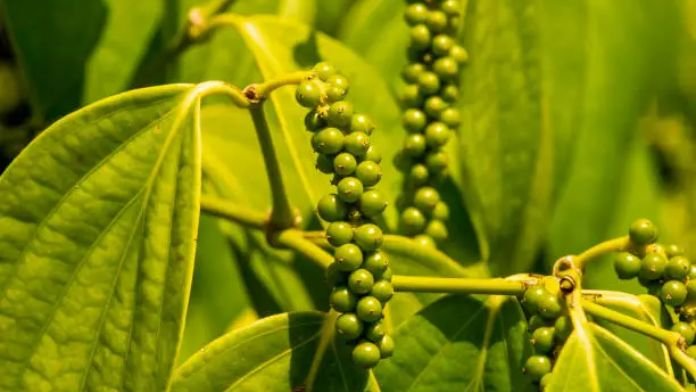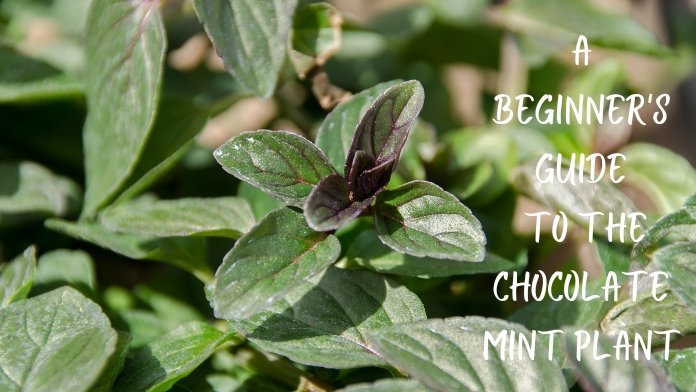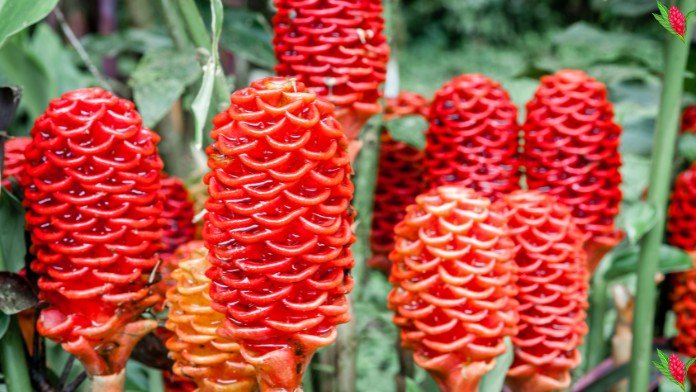
How to Grow Black Pepper
Black pepper is a flowering vine best known for its aromatic and spicy pepper. Although the plant grows best in tropical climates, it can adapt to dry or cold climates. As long as a pepper plant is grown in a warm temperature, in partial shade, and has a place to spread its vines, it can thrive.
Take care when planting, growing, and harvesting your plant so that it produces the healthiest pepper berries possible.
How to Grow Black Pepper From Seeds
Growing your products can be incredibly rewarding. If you want to show off your green thumb and take your garden to the next level, why not plant and harvest your black peppercorns?

Once you get the hang of it, growing your pepper plants is easier than you think and may even save you a few pennies. (Fun fact: The humble pepper was, in fact, a prized possession and used as currency in ancient Rome.)
To start growing your peppers, you need to get your pepper seeds. Unfortunately, because of the way peppers are dried and processed, those sold in supermarkets are less likely to sprout. Therefore, you cannot take a couple out of the grinder and put them on the ground. Instead, it’s best to get pepper seeds from a garden center.
Watering:
Regular watering is necessary for the plant to grow properly. Watering should be done at least once and preferably twice a week. If you don’t water the plant for two weeks, it will begin to wither and die.
Fertilizing:
Organic fertilizers will help your plants grow faster and produce more fruit.
Harvesting:
Once the fruits appear, pinch the tops back to encourage bush formation. Cut chilies as needed.
To store chilies, place unwashed pods in plastic bags and refrigerate. Store dried black pepper seeds in an airtight container.
Pepper Plant Care:
Caring for your pepper plant is similar to caring for other houseplants. Follow these tips to ensure healthy growth.
• Provide bright lighting. Plants growing in low light flower early and stop producing fruit.
• Feed your pepper plants regularly. Apply fertilizer to the soil around the base of each plant.
• Regular watering. Watering helps to avoid illness and maintains healthy stems.
• Pruning branches to increase business.
• Replace the plants as needed.
• Use mulch to guard against insects.
• Remove any debris around plants.
• Avoid overfertilization. Too much nitrogen promotes leaf growth.
• Do not let weeds take over your garden. Weeds and crops compete for nutrients and sunlight.
• Keep plants out of cold drafts.
• To prevent frost damage, cover plants with floating row covers.
• Protect plants from rain. Place a sheet of clear plastic over the plant to catch any extra water.
How Long Does it Take to Grow Peppercorns?
Pepper plants usually take several years to produce flowers and peppercorns, so growing them requires a little patience. But the plants themselves look beautiful. While you wait for hot pepper seeds to grow, you can enjoy the bright green leaves of the plant.
Common diseases of black pepper
Black pepper plants are affected by various diseases such as bacterial wilt, anthracnose, and mildew. These diseases cause damage to leaves, stems, and fruits. The best way to prevent these diseases is to keep the soil moist and avoid exposing the plants to extreme temperatures.
Black pepper plants are attacked by various insects, fungi, bacteria, viruses, and nematodes. The most common disease is called “pepper wilt,” which causes leaf drop and stunted growth. Other common pepper diseases include bacterial soft rot, fungal leaf spot, and viral mosaic.
Uses of Black pepper
Black pepper has been used for centuries to treat various ailments such as colds, coughs, and headaches. It helps in digestion and relieves gas.
A few drops of essential oil added to hot tea is an excellent remedy for sore throat.
Black pepper has been used for centuries to treat various ailments such as indigestion, fever, colds, coughs, sore throats, and toothaches. Also, black pepper is used to prevent cancer, diabetes, and heart disease.
FAQ
Can you grow your own black pepper?
The pepper plant (Piper nigrum) is native to India, so it prefers warm temperatures. However, under the right conditions, you can grow and harvest your own peppers. A greenhouse is an ideal environment, as pepper plants grow in bright or shady places where they can get plenty of sunlight and stay warm.
What is the lifespan of a black pepper plant?
Although black pepper can grow to a height of 10 m (33 ft) in the wild, in cultivation it is usually kept to a more manageable height of 3 to 4 m (10 to 13 ft). Black pepper is a perennial plant with a life span of more than 30 years and a commercial lifespan of usually 12 to 20 years.
Do pepper plants need darkness?
Pepper plants are grown indoors as a bright light. South or west-facing window light is best. Try placing plants near windows to take advantage of all the light. The further we get from the window, the darker it gets.
Is black pepper monocot or dicot?
Piper plants are neither monocots nor eudicots (true dicots). Piperales: An order of dicotyledonous flowering plants containing herbs, shrubs, and small trees. Members of this order have small flowers grouped in cone-shaped structures.
RELATED POSTS
View all


